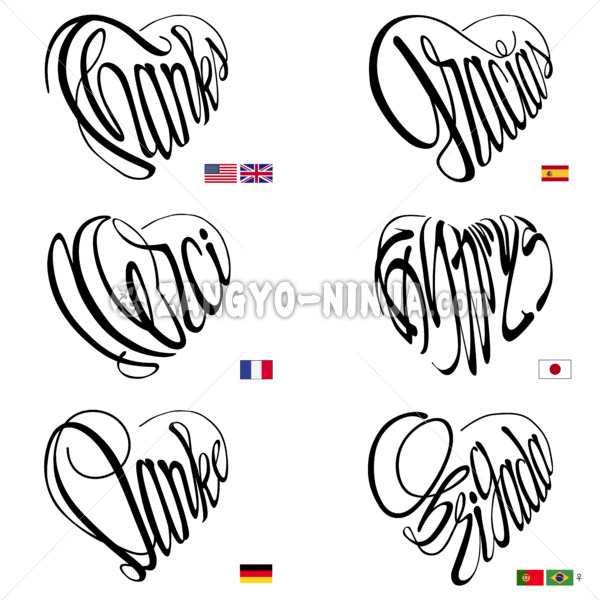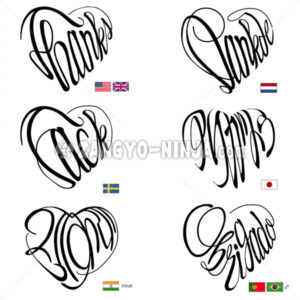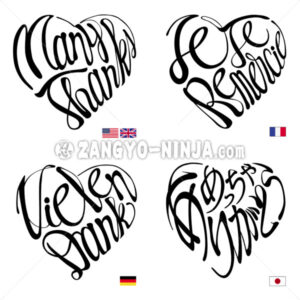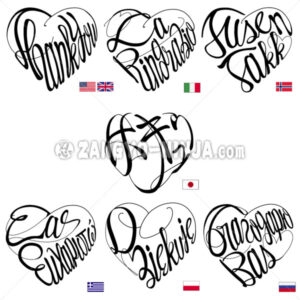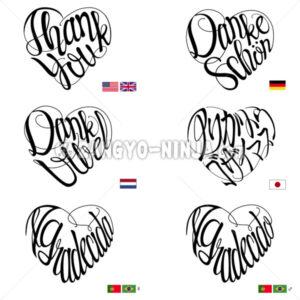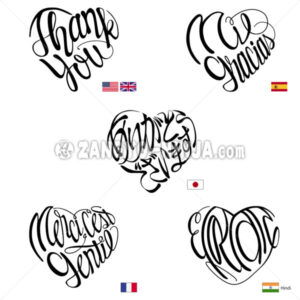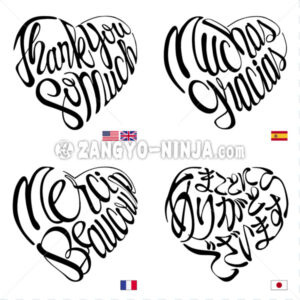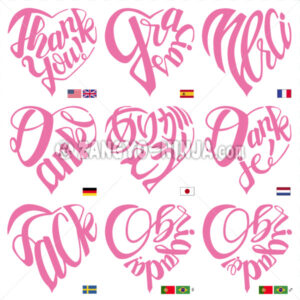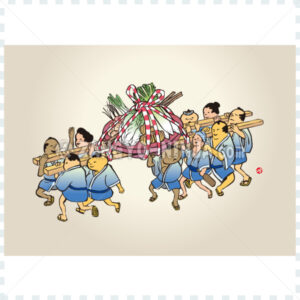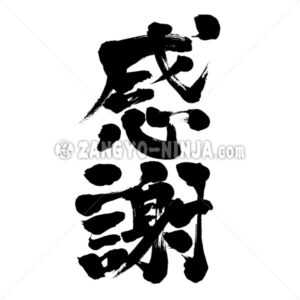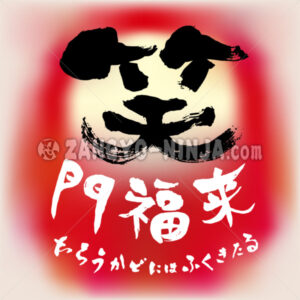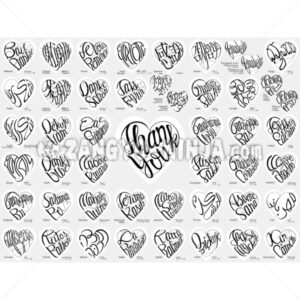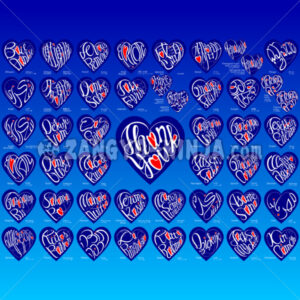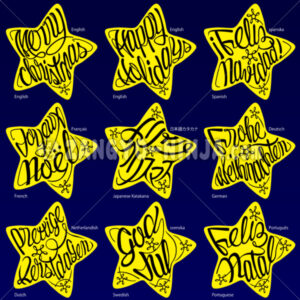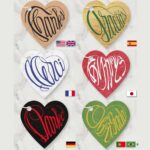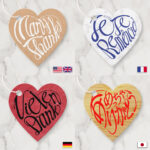Thanks is expressed in English, Spanish, French, German, Portuguese and Japanese Hiragana as a heart-shaped writing style.
And theme is “Heart of Gratitude”.
The Japanese phrase “thanks” is written in a basic form.
This Japanese phrase “arigatou” is the basic form of the word “thanks”. Although there are ways to write it that include Kanji characters, it is generally written only in Hiragana. “Arigatou” should be used for siblings, friends, and other close people, while ‘arigatou gozaimasu’ should be used for business, formal occasions, and when dealing with elders. It is a polite form of “Arigatou”.
These are the derivatives of “Arigatou”.
・Arigaou in Katakana (Thanks in Katakana)
・Arigatou Gozaimasu (Thank you in Hiragana)
・Arigatou Gozaimasu (Thank you in Katakana)
・Meccha Arigaou (Many Thanks in Hiragana)
・Makotoni Arigatou Gozaimasu (Thank you so much in Hiragana)
What is the origin of the Japanese word “Arigatou”?

From the above, it is “difficult (gatai)” “to receive something from others (aru)”, which becomes “ari-gatai”, and finally “arigatou”.
The “aru and ari” mentioned above can be written in Japanese with Kanji characters as 有り and 有る
“gatai” is written in Japanese with Kanji characters as “難い” (difficult).
Both together are “有り難い (ari-gatai)”, i.e. “ありがとう (Arigatou)” in Japanese with Kanji is “有り難う (Arigatou)”.
Why is “Arigatou” in Japanese with Kanji not used?
In other words, the Japanese word Arigatou, which includes Kanji, is “Arigatou”.
The following is a speculation by the author, but the reason why hiragana-only arigatou is common is not well documented.
The Japanese language is made up of three different notations and combinations of kanji, katakana, and hiragana. Even Japanese people sometimes think it is complicated. When written in Japanese, including kanji, there is a time lag for misreading and reading.
And the first thing to learn in modern Japan is hiragana. One reason may be that hiragana, with its many rounded notations, is used as a notation with a sense of familiarity.


